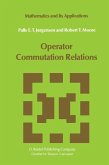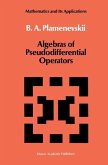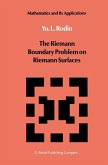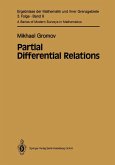In his Retiring Presidential address, delivered before the Annual Meeting of The American Mathematical Society on December, 1948, the late Professor Einar Hille spoke on his recent results on the Lie theory of semigroups of linear transformations, . . - "So far only commutative operators have been considered and the product law . . . is the simplest possible. The non-commutative case has resisted numerous attacks in the past and it is only a few months ago that any headway was made with this problem. I shall have the pleasure of outlining the new theory here; it is a blend of the classical theory of Lie groups with the recent theory of one-parameter semigroups. " The list of references in the subsequent publication of Hille's address (Bull. Amer. Math -. Soc. 56 (1950)) includes pioneering papers of I. E. Segal, I. M. Gelfand, and K. Yosida. In the following three decades the subject grew tremendously in vitality, incorporating a number of different fields of mathematical analysis. Early papers of V. Bargmann, I. E. Segal, L. G~ding, Harish-Chandra, I. M. Singer, R. Langlands, B. Konstant, and E. Nelson developed the theoretical basis for later work in a variety of different applications: Mathematical physics, astronomy, partial differential equations, operator algebras, dynamical systems, geometry, and, most recently, stochastic filtering theory. As it turned out, of course, the Lie groups, rather than the semigroups, provided the focus of attention.
`...the reader obtains the impression that there remains much to discover in commutation theory, and this monograph provides both motivation and a guide to the current state of knowledge.'
Mathematical Reviews (1986)
Mathematical Reviews (1986)
`...the reader obtains the impression that there remains much to discover in commutation theory, and this monograph provides both motivation and a guide to the current state of knowledge.'
Mathematical Reviews (1986)
Mathematical Reviews (1986)








